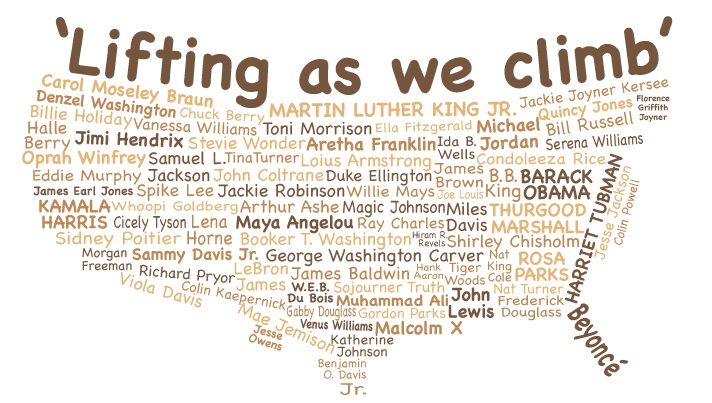Smithsonian showcases African American history and culture
The headline of this column, “Lifting as we climb,” is the motto of the National Association of Colored Women’s Clubs. It could also serve as the mission statement of the National Museum of African American History & Culture (nmaahc.si.edu). By telling the story of African American contributions to the building of our nation, it inspires future generations to rise to the challenge.
The physical building in Washington, D.C., is closed because of the pandemic, but the website offers plenty of content to educate and inspire. There are virtual exhibitions, online collections and digital resources full of interesting information and historical photographs and videos of Black contributions to America.
The home page features a full-screen image of the building, the design of which is an homage to African, the American south and Caribbean influences. In the Explore section of the site is a page dedicated to the building’s design. It features a time-lapse video of the construction of the museum.
As you scroll down the home page, there are several features on Black History Month, which is this month. The first one is about tracing African American family histories. It has links to virtual training sessions on how to trace your roots, tips on how to preserve family treasures for future generations and online tools to trace Civil War-era ancestors.
The next feature is an exhibit on the life of Pauli Murray, the pioneering Black woman who was a lawyer, activist, writer and priest during part of the 20th century when this was unheard of. The exhibit features several articles on her and other important people in her story, videos, an interactive timeline of her accomplishments and more.
The third feature on the home page profiles historian and author Carter G. Woodson, the founder of Negro History Week in 1926. In 1976, President Ford extended the observation to the full month of February. There are also descriptions and links to several offerings the museum has celebrating the month.
Below that is a slideshow of objects from the museum that offer a window into Black life at different times in our nation’s history. There’s a cradle made by an enslaved person, a pass allowing a free Black woman to travel in 1832, a family Bible, an elaborately illustrated marriage certificate from 1902, family photos and other objects of interest.
At the bottom of the page are links to upcoming online events and recent news related to the museum’s mission. The museum has statements on the recent passing of Black cultural icons Mary Wilson, Cicely Tyson and Hank Aaron.
A navigation menu across the top of the page takes you to the site’s other sections. The Explore section is where most of the virtual action takes place. Here you can search the museum’s collections, view online exhibitions, listen to curators talk about the museum’s offerings and read stories about the collections. There’s a digital resources guide and a blog. You can explore the different centers in the museum; read the thoughts of curators from around the world; learn about initiatives, programs and projects dedicated to Black history; and find publications on Black history and culture.
Like all of the Smithsonian websites, this one is nicely designed with good typography, strong imagery and logical navigation. And you can easily spend hours exploring its abundant content.

Kevin OʼNeill has been a staff artist for The Times-Tribune since June 1993. In addition to doing illustrations and infographics and designing pages for the paper’s print and electronic publications, he writes InSites, a weekly column about websites and apps. Contact: koneill@timesshamrock.com; 570-348-9100 x5212




